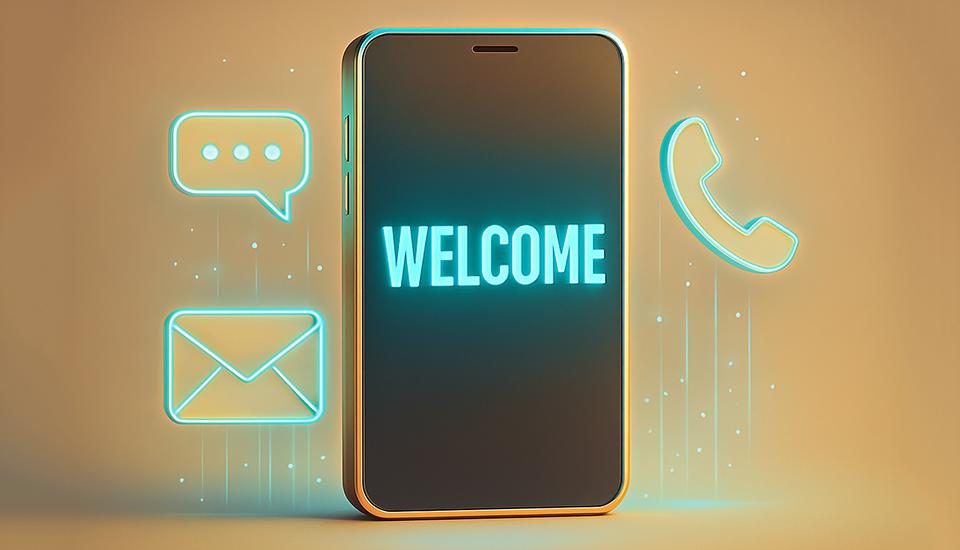Table of Contents
Sign up to Whippy
See how Whippy can work for you business

Why Compare Email and SMS?
In healthcare, people need to share information quickly and securely. Two of the most popular ways to do this are through email and text messages (SMS). Emails are great for longer or more detailed conversations, while SMS works best when you need to send short, quick messages.
But when you're dealing with private patient information—called Protected Health Information (PHI)—you must follow strict rules. These rules are part of the Health Insurance Portability and Accountability Act (HIPAA). Whether you use email or SMS, you need to make sure you're sending messages the right way.
This article explains what HIPAA compliance looks like for email, common mistakes to avoid, and why HIPAA-compliant texting can be a safer and easier option for many healthcare professionals.
What Are the Rules for HIPAA-Compliant Email?
Sending emails that contain PHI isn’t as simple as hitting "send." You need to take extra steps to protect patient data. These rules help covered entities stay aligned with the Security Rule, which outlines how to protect electronic health information.
1. Use Encrypted Email
Encrypted email helps protect messages by turning them into code. This means only the right person can read the message. Without email encryption, there's a high risk of someone else seeing private information.
2. Set Access Controls
Only the right people should be able to read emails that include PHI. This means using strong passwords, limiting who can log in, and keeping mobile devices secure.
3. Add Disclaimers
A compliant email should tell the person who receives it not to share or forward PHI. This simple step helps prevent accidental sharing.
4. Save Records for Audits
Healthcare providers need to keep a copy of emails that contain PHI. These records must be stored safely and be easy to retrieve in case of a HIPAA audit.
5. Sign a Business Associate Agreement (BAA)
If you use an outside company (like an email service provider) to help send emails, you must have a Business Associate Agreement (BAA). This ensures the third party also follows the Security Rule and other HIPAA regulations.
Even when all the right steps are taken, email can still be risky. That’s why more healthcare organizations are switching to text messaging.
Common Email Mistakes in Healthcare
Many providers face issues with HIPAA because of email errors. Here are some of the most common problems:
- Not using encryption: Sending PHI without email encryption can lead to serious security risks.
- Sending to the wrong person: One small typo in an email address can result in a privacy violation.
- No audit trail: Without records, it’s hard to show that you followed HIPAA compliance protocols.
- Weak passwords: Simple or reused passwords make it easy for hackers to break in.
These issues show that email can create risks unless strong security measures are in place.
Why SMS Is Often Safer
Using a HIPAA-compliant texting platform is often safer and simpler. For a complete breakdown of how SMS can meet HIPAA requirements, check out our full guide to HIPAA-compliant texting. Here’s why more healthcare professionals are making the switch:
1. Built-In Security
Texting platforms like Whippy AI come with secure messaging and encryption already built in. This means you don't have to set up complicated systems yourself.
2. Fewer Mistakes
Texts are sent to a phone number, not an email address. That makes it harder to send PHI to the wrong person.
3. Higher Engagement
Texts get opened about 98% of the time, compared to only 20% for emails. When time matters, text messages are more effective.
4. Easier to Use
Staff don’t need special training to use a texting platform. It’s faster and more user-friendly than email, especially when sending updates or appointment reminders.
SMS vs. Email: Which One Follows HIPAA Better?
Both channels can be used securely, but they serve different purposes:

Remember, HIPAA compliance isn’t just about avoiding fines—it’s about protecting patient trust and keeping sensitive data safe.
How Whippy AI Helps with HIPAA Compliance
Whippy AI is built to help healthcare organizations communicate securely and easily, without stress. Here’s how:
- End-to-End Encryption: All texts are protected, so you're never sending unencrypted PHI.
- Automation: You can schedule texts for appointment reminders or follow-ups, saving staff time.
- Optional Email Integration: Need both? Whippy AI can integrate with email systems to support secure, multi-channel communication.
- Compliance Built-In: From secure messaging to automatic logs, Whippy helps you follow every part of the Security Rule.
Final Thoughts
Both email and SMS can be useful for healthcare communication. But for many day-to-day needs, HIPAA-compliant texting is safer, faster, and easier to manage.
If you're part of a healthcare practice and want to keep things simple while meeting HIPAA compliance rules, platforms like Whippy AI are a smart choice. They help you send updates, reminders, and even PHI with confidence, while staying on the right side of the law.
👉 Want to improve your communication strategy? Try a demo of Whippy AI today and see how we can help your team protect patient data and communicate more effectively.
Table of Contents
Sign up to Whippy
See how Whippy can work for you business
Related Articles

What Is an SMS Message Segment? The Complete Guide

Automated Message for First Time Guest: Best Tips & Solutions

Messaging Crelate Chrome Extension for Recruiting Workflows

The Best TempWorks Beyond Messaging Integration

Avionte BOLD: Candidate Messaging Integration
